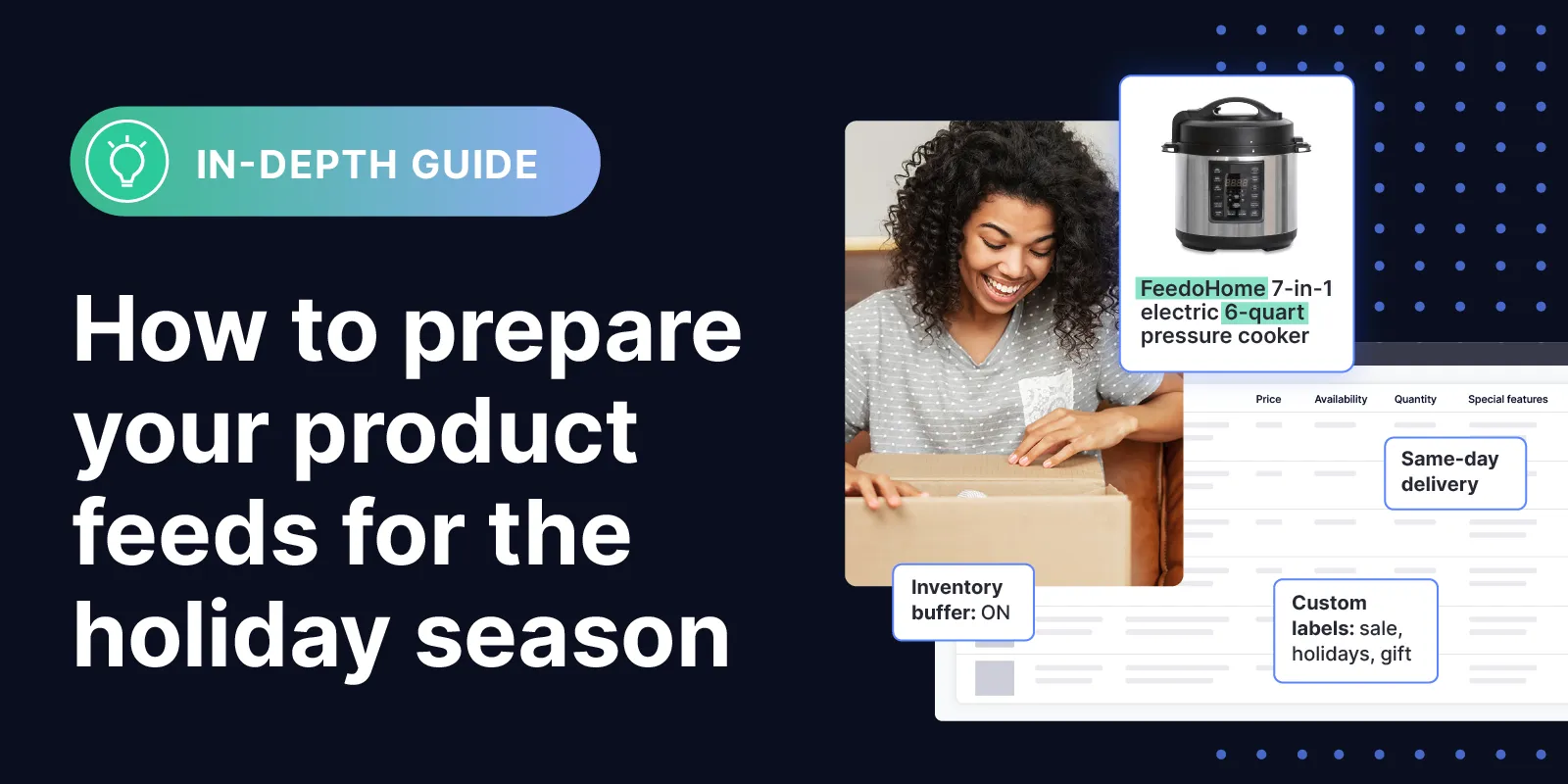As the holiday season approaches, ecommerce businesses must prepare their product feeds to face off against inventory challenges, competing offers from other sellers, and consumer fulfillment expectations.
We want you and your team to be jolly (and holly) when the season comes, so in this blog, we show you how to prepare your product feeds for important holiday promotions like Black Friday, Cyber Monday, Christmas, and Boxing Day.
#1 Optimize your product titles, descriptions, and other attributes
Each selling channel has its best practices for formatting product titles, descriptions, images, product categories, and other customer-facing or hidden attributes.
With competition at its peak, having well-optimized product titles and descriptions is crucial—especially those top products that generate the most revenue and solidify your brand’s position on key marketplaces.
Product titles should include relevant, descriptive keywords that both search engines and consumers will find useful. You may also consider adding holiday-themed keywords in your descriptions to attract seasonal shoppers, especially if your product makes for a great gift.
It’s good practice to fill in as many attributes as you can. Details like dimensions, weight, and materials help customers determine if your product is right for them, and aid marketplaces and search channels in serving those products to the right audience.
Finally, make sure you perform proper A/B tests to find the combinations of attributes that convert the best.
#2 Make sure your feeds don’t go down
The last thing you need during the busy season is for your product feeds to go down.
Implementing strong data governance safeguards and regular data testing can help prevent disruptions like account suspensions, unoptimized exports, and network outages.
Your product feed management solution should have these safeguards to protect your business:
- Alerts that warn you of potential issues or missing values
- Hard stops that prevent bad data from being published
- Automated retries for imports or exports that timeout while processing
- Random sampling to check data quality within large catalogs
- Export conditions for outbound data
#3 Prepare your inventory management for surges in sales
If you have limited inventory counts and a sudden influx of customers due to promotions, you run the risk of disappointing customers with order cancellations or delays—which can be especially damaging to your reputation during such a time-sensitive period.
Consider using inventory buffers to account for spikes in sales. For example, you might want to always keep five stock units on hand rather than report 100 percent of your inventory to Amazon. That way, if you receive a sudden influx of marketplace orders and website orders at the same time, you can fulfill them all without issue.
For sellers with a wide range of products but limited stock for each SKU, the risk of overselling is much higher since they can’t rely as heavily on buffers to cushion their reported inventory counts. Boutiques, niche product sellers, artisans, and brands that rely on limited edition or flash sales are all vulnerable to this issue. In this case, a real-time sync solution may be more effective.
You can mitigate returns by ensuring that data is accurate and detailed to help customers make more informed decisions. According to Power Reviews, 56% of customers return items because they do not match the online description.
#4 Keep your feeds up-to-date
Data synchronization across all your channels is essential to maintaining accuracy in pricing and inventory, as well as consistency in branding. Out-of-date or mismatched data can lead to customer confusion, especially when it comes to descriptions or product attributes that play an important role in the decision-making process.
Keep your feeds up-to-date by using a feed management platform with frequent or real-time synchronization capabilities to keep your listings consistent no matter where they are or how often they’re changed.
#5 Use dynamic remarketing campaigns
Dynamic remarketing allows you to keep potential customers engaged by showing them ads for products they’ve viewed or shown interest in. This approach can help to win over more price-sensitive customers who might be interested in buying items they were interested in but were not expecting to be on sale.
Retargeting paired with cross promotions via SMS, email, and social commerce channels can help drive your message home and keep your brand top-of-mind.
If you’re retargeting using Google display ads, take advantage of supplementary feed attributes that allow you to specify landing pages, product titles, and product recommendations.
#6 Leverage your brick-and-mortar locations
Use your brick-and-mortar stores as fulfillment centers to give customers more rapid options like buy online, pick up in store, and same-day delivery.
You can also choose to drive more foot traffic to your store by using local inventory ads to appeal to those customers who will want to check out your product in person before making a purchase.
#7 Add custom labels to your product feeds
Finally, take advantage of custom labels in your product feeds to better customize your ad campaign strategy.
By categorizing products as holiday-specific items, bestsellers, or high-margin, you can optimize your campaigns and ensure the most important products receive the visibility they need.
For example, you could create a custom label for your high-margin Black Friday-promoted products, so that you can place higher bids on those products, instead of others that would yield lower profits.

Muhammed is a content marketing specialist creating informative content to help ecommerce professionals solve industry challenges and stay ahead of the curve.

